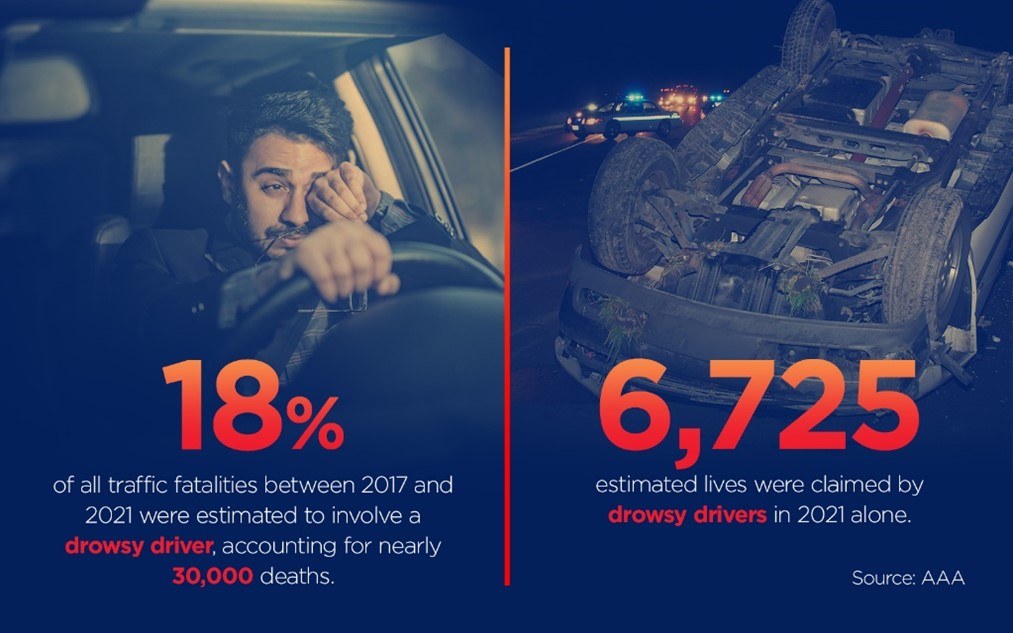BOISE – Daylight Saving Time is just around the corner, and AAA warns that when drivers feel sleepy, the consequences can be deadly. According to soon-to-be-published research by the AAA Foundation for Traffic Safety, an estimated 18% of all traffic deaths between 2017 and 2021 involved a drowsy driver, with nearly 30,000 deaths nationwide. That number is ten times higher than the total found in traditional crash data. Previous Foundation research suggests sleep loss is a leading factor in drowsy driving crashes.

The Idaho Transportation Department reports that in 2022, about 5% of all single vehicle crashes in the state involved a drowsy driver. There were an estimated 625 crashes involving a sleepy driver in 2023, about 200 more than the previous year.
“Even in a small group of people, it doesn’t take long to find someone who is suffering from a sleep deficit, with the Centers for Disease Control and Prevention stating that 35% of Americans are getting less than the recommended minimum of seven hours of rest each day,” says AAA Idaho public affairs director Matthew Conde. “With the switch to Daylight Saving Time on March 10, there’s no better time to improve our sleeping habits to make the roads safer.”
According to the National Highway Traffic Safety Administration, there is widespread agreement between the traffic safety, sleep science, and public health communities that the impact of drowsy driving is generally underestimated due to inadequate reporting tools. AAA’s latest research is the result of in-depth crash investigations and a lengthy review of national fatal crash data.
B-roll footage of drowsy driving can be found here.
The impact of sleep deprivation
Drowsiness impairs drivers in several ways:
- Reduced alertness and delayed reaction time. According to the experts, just one hour less than the recommended minimum of seven hours of sleep increases the risk of a crash.
- Impaired judgment. Lack of sleep can lead to poor decision making, with those who sleep three hours or less displaying impairment similar to those over the legal limit for alcohol.
- Microsleeps. Even momentary lapses in consciousness at high speeds can quickly turn deadly, as a vehicle can travel hundreds of feet in just a few seconds.
According to the most recent AAA Traffic Safety Culture Index, 95% of drivers view driving when they have a hard time keeping their eyes open to be very or extremely dangerous, but 18% reported doing so in the previous 30 days before the survey.
“Lack of sleep is impairing for all the reasons we’ve mentioned. But another thing to look out for is aggression. When we’re tired, we tend to get impatient with people around us, which can lead to hostile words and gestures, tailgating, weaving in and out of traffic, and other dangerous activities,” Conde said.
AAA safety tips
Thankfully, there are many things that drivers can do to responsibly manage fatigue and the dark mornings that accompany the change to Daylight Saving Time:
- Get at least seven hours of sleep per night.
- Make sure your bedroom is conducive to sleep – if necessary, use blackout curtains and white noise to manage light and sound.
- Consider the effect that screen time may have on your ability to wind down for the evening.
- Travel at times of the day when you are normally awake.
- Take breaks every two hours or 100 miles. Trade off with another driver if necessary.
- Listen to your body. Stop for a nap at the first signs of weariness rather than pushing yourself too far.
- With reduced visibility during the morning commute, actively scan the road for pedestrians and bicyclists, including children on their way to school.
“Coffee, the radio, and cold air on your face are temporary solutions at best,” Conde said. “You owe it to yourself and everyone around you to know when enough is enough. It takes a lot of wisdom and self-discipline to take yourself off the road when you’re tired, but it may be one of the best decisions you’ll ever make.”

